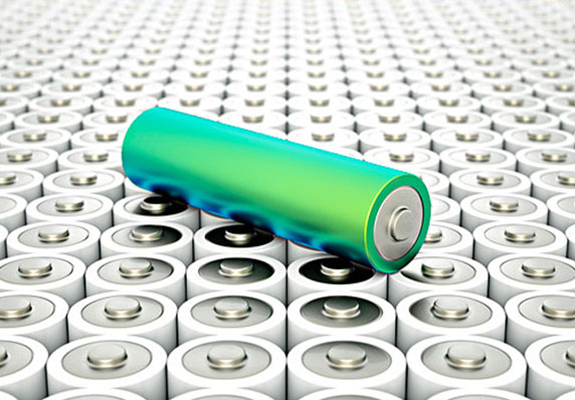Lithium Batteries Ion Battery Monitoring System-Definition And Working
Feb 14, 2020 Pageview:1558
Introduction
There are many recommendations about lithium-ion batteries to avoid the swelling. The reason is that the result could be extremely dangerous and present health aspects and financing losses to us. The battery cell is so integrated into our lives that sometimes we take the usage of the for granted; resulting in the complete forgetfulness towards the possible dangers it can hold for us. One of the most common reasons for battery swelling and explosions is being overcharged. We keep our phones, laptops, music players and other chargeable gadgets undercharge and completely forget about. Our busy lifestyle and short life span of attention results in overcharging our devices; let’s face it, we are a forgetful generation. Although we are a generation that has brought forth great technology to tackle our living problems with. When it comes to battery charging of lithium-ion batteries, we can incorporate a battery monitoring system. The main job of these systems is to regulate the charging voltage which can prevent short-circuiting the battery. This article walks you through the monitoring systems for lithium-ion batteries.
What is BMS in lithium-ion batteries?
BMS is the short form for the battery management system. It is an essential integration with lithium-ion batteries to control their changeability, both input, and output. It is a device that helps to manage and optimize real-time control of each battery under charge and off capability. While controlling the charging behavior of the battery, it also communicates with external devices. As a result, it controls and optimizes the temperature ranges, charging voltages, management of SOC calculations and many other factors affecting lithium-ion batteries.
Incorporating these systems help to ensure the changeability and durability of your battery cells. It is also considered a safety measure against the potential hazards a battery holds.
How does the lithium-ion battery monitor system work?
Before being able to use a lithium-ion battery monitoring system, you are required to configure them. That means there is a configuration between the system and external devices, this is to create the linkage between the two and permit their communication. This configuration takes place in different software; this software provides real-time monitoring data.
This software provides a constant check on the device. Here is a list of the activities and features for a device management system;
Protecting the battery cell
This system monitors the ingoing current for battery charging; it controls both low voltage and high voltages of electricity. In any condition, it communicates with the external device to stop the changeability completely or even regulates it. This ensures a long life for the battery and its total health. This system uses a certain accessible current limit to measure the existing current against it. If the amount of current is greater or smaller, these data are sent to the battery charger. An inverter, battery charger, and motor controller can help to regulate the current according to these data.
Real-time calculation of the charging time
The monitoring system is also responsible to calculate the exact amount of time required to recharge the batteries. This device provides this kind of information by tracing the amount of ingoing and outgoing current as well as monitoring the cell’s charging rates. The function of this system is a lot similar to an electric fuel injector; it states the exact remaining time to a full capacity of the battery. Having this information can help you unplugged the electricity from the battery and avoiding the possible overcharging.
Monitoring the lithium-ion battery’s health and durability
The health of the battery is calculated; this is another great feature that comes with a battery monitoring system. A lithium-ion battery consists of a hardware structure and a closely wired circuit. A battery monitoring system can pinpoint if there are any loose connections or breakages. Based on the resistance of the same elements, the battery device decides the remaining healthy working hours of a battery cell. This information is helpful to replace a weak or almost dead lithium-ion battery to avoid any accidents and complications with you and your devices.
A list of secondary functions of the battery monitoring system
This system also helps to regulate the battery in case of being overcharged; it drains the excess charged battery cells. The capacity of a battery in a pack of batteries that are being charged together increases to its maximum durability.
Monitoring the battery temperatures helps to avoid an increased rate of chemical tension in the battery; this can help to increase battery life as well as control the safety measures. It can also communicate with the device to start fanning in order to decrease the temperatures.
real-time information and other values and parameters are sent to charging devices by the monitoring system.
It also keeps a database of errors and configurational problems as well as diagnoses related to chronic and battery health. This is useful as aa background history of the battery. In case of any problem arising, using this database helps to create a better diagnosis of the battery's problem.
Do all the batteries need a la lithium-ion battery monitoring system?
The short answer to this question is yes. The reason lies in the very nature of lithium-ion batteries. All of this battery of the chemical structure that is prone to overcharging; this can result in faith lure of battery function or what is commonly known as a dead battery. If these batteries are not charged according to their “safe operating area” the result can be lowered battery life or complete loss of it.
Conclusion
Lithium batteries can last much longer if a battery monitoring device is used along with it. Many even consider using a BMS was a necessary safety measure.
- Prev Article: 18650 vs 21700 Battery-Definition, Differences, and Applications
- Next Article: Lithium-polymer Battery Vs Lithium-ion Battery
Leave Message
Hottest Categories
-
Hottest Industry News
-
Latest Industry News












